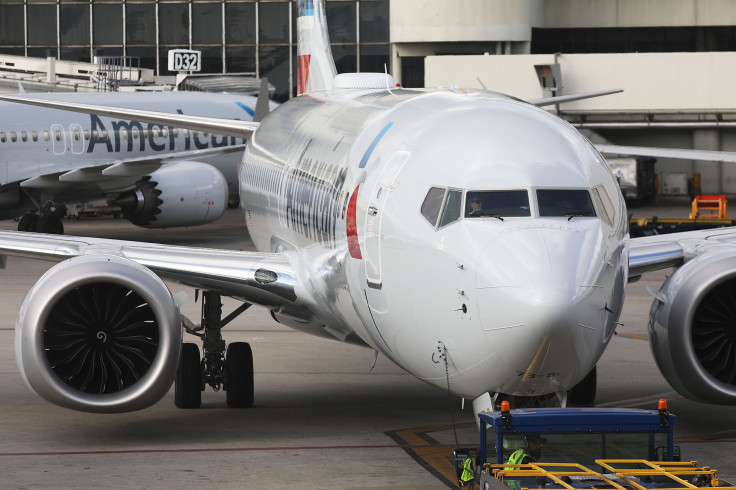There's No Alternative To The Boeing 737 MAX

The new 737 MAX jet family from Boeing (NYSE:BA) has experienced its second fatal crash in the span of just a few months. Last October, a Lion Air 737 MAX 8 plunged into the sea less than 15 minutes after takeoff, killing all 189 people on board. On Sunday, an Ethiopian Airlines 737 MAX 8 crashed a few minutes after takeoff, killing all 157 passengers and crew.
In the wake of this second tragedy, many aviation regulators around the world have grounded the 737 MAX, including in China, India, the EU, the U.K., Australia, Indonesia, and Singapore. Although it allowed the 737 MAX to keep flying longer than other countries, the U.S. grounded the planes on Wednesday afternoon.
Many travelers, safety officials, and airline personnel are worried about the safety of the Boeing 737 MAX and as a result, Boeing stock dropped 11 percent in the first two days of this week. Let's look at what the recent crash and the grounding of the 737 MAX might mean for Boeing over the next few years.
If something is wrong, it will get fixed
Airline accident investigations take a very long time. It can be weeks before investigators share initial findings, and it typically takes more than a year to complete a final report. Thus, it is important to note that we don't know exactly what caused the Lion Air crash in late October, and we know even less about the Ethiopian Airlines crash, which happened just a few days ago.
Preliminary findings from the Lion Air investigation suggest that a combination of poor maintenance procedures, flight control software that relied too much on a single sensor, and inadequate pilot training may have contributed to the accident. On the surface, Sunday's crash bears some similarities to what happened in October, but there's no firm evidence yet to support any potential explanation for the latest disaster.
In any case, Boeing has been working on a software update that should hopefully prevent a recurrence of the scenario that led to the Lion Air crash. This update is on track to be rolled out to airlines by the end of April at the latest. According to the company, the Boeing 737 MAX is safe as is, and this software update will simply "make an already safe aircraft even safer."
The big takeaway is that Boeing is already taking action to improve the 737 MAX's safety. If investigators discover other issues, Boeing will undoubtedly make more changes to ensure the safety of the 737 MAX.
Airbus can't meet the demand
Even if Boeing fixes any vulnerabilities uncovered by the ongoing accident investigations, some observers may wonder if airlines and their customers will trust that the Boeing 737 MAX is truly safe. History suggests that these concerns will eventually fade -- assuming that there are no further 737 MAX crashes similar to the first two. In any case, airlines and travelers don't have much choice, at least in the long run.
Airlines' demand for new, fuel-efficient aircraft -- particular medium to large narrow-bodies like the 737 MAX -- is insatiable. Airbus' (NASDAQOTH:EADSY) A320neo family is the only major competitor.
As of the end of February, Airbus had a backlog of more than 5,800 firm orders for the A320neo family of jets. Even at an increased production rate planned for 2021, Airbus will build no more than 725 a year. At that rate, it would take eight years to fulfill all the existing orders. Any further output increases won't be feasible until at least 2022.
Thus, Airbus can barely keep up with half of the market's demand. It would take many years for the company to raise output enough to make even modest market-share gains (as measured by output). As a result, most airlines that have ordered the Boeing 737 MAX have no reasonable alternative -- they can't all switch to Airbus. Meanwhile, the 737 MAX and A320neo will be so widespread a decade from now that it will be extremely hard for most travelers to completely avoid either type.
Lessons from the 787 Dreamliner
This isn't the first time in recent years that a Boeing model has been grounded. In 2013, the Federal Aviation Administration and other regulators worldwide grounded the Boeing 787 Dreamliner for four months after the lithium-ion batteries in multiple 787s caught fire within weeks of one another other.
Boeing designed a workaround to reduce the risk of fire and contain any fires that might break out. That said, investigators never discovered the underlying cause of the fires. To make matters worse, another Dreamliner caught fire just two months after the fleet returned to service.
Nevertheless, the Boeing 787 Dreamliner is on track to become the best-selling wide-body aircraft in history. Furthermore, 2013 was by far the Boeing 787 family's best year of sales in the past decade (albeit helped by the introduction of the 787-10 model). Clearly, airlines didn't have much hesitation about doubling down on the 787 soon after the battery fires.
Of course, the parallels between 2013 and today are not perfectly identical. Luckily, the Dreamliner fires did not cause any fatalities. (One occurred on an empty aircraft.) Additionally, the 787 family is far more specialized than the 737 MAX in terms of its capabilities. Still, all signs point toward the recent tragedies involving the Boeing 737 MAX as having little or no long-term impact on the company's financial results.
This article originally appeared in The Motley Fool.
Adam Levine-Weinberg has no position in any of the stocks mentioned. The Motley Fool has no position in any of the stocks mentioned. The Motley Fool has a disclosure policy.




















